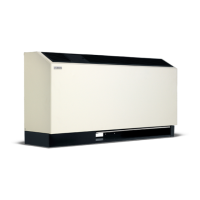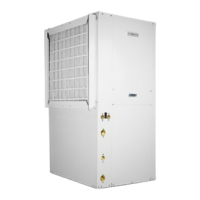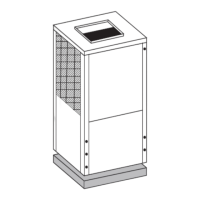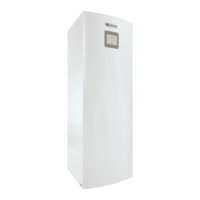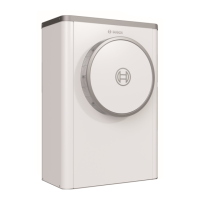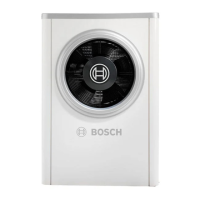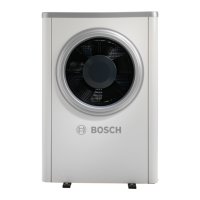Servicing and Repair Information
17.4.5 Ventilated Area
Ensure that the area is in the open or that it is adequately
ventilated
before breaking into the system or conducting any hot
work. The ventilation must safely disperse all released
refrigerant, preferably expelling it externally into the
atmosphere. The ventilation must be present during the period
that the work is carried out.
17.4.6 Checks to the Refrigerating Equipment
Where electrical components are being changed, they must be fit
for the p
urpose and to the correct specification. At all times the
manufacturer's maintenance and service guidelines must be
followed. If in doubt, consult Bosch service and support for
assistance.
The following checks must be applied to installations using
flammab
le refrigerants:
Ensure the actual refrigerant charge is in accordance with the
room size within which the refrigerant containing parts are
installed.
Ensure that the ventilation machinery and outlets are
operating adequately and are not obstructed.
Check the secondary circuit for the presence of refrigerant, if
an indirect refrigerating circuit is being used.
Ensure the markings on the equipment continues to be visible
and legible. Markings and signs that are illegible must be
corrected.
Ensure the refrigerating pipes or components are installed in
a position where they are unlikely to be exposed to any
substance that may corrode refrigerant containing
components, unless the components are constructed of
materials that are inherently resistant to being corroded or
are suitably protected against being so corroded.
17.5 Checks to Electrical Devices
Repair and maintenance to electrical components must include
initial safety checks and component inspection procedures. If a
fault exists that could compromise safety, then electrical supply
must NOT be connected to the circuit until the safety fault is
satisfactorily corrected. If the fault cannot be corrected
immediately but it is necessary to continue operation, an
adequate temporary solution must be used. This must be
reported to the owner of the equipment, so all parties are
advised.
The following are required initial safety checks:
Ensure that capacitors are discharged—this must be done in a
safe manner to avoid possibility of sparking.
Ensure that no live-electrical components and wiring are
exposed while charging, recovering, or purging the system.
Ensure that there is continuity of earth bonding.
17.6 Repairs to Sealed Components
NOTICE
Sealed-electrical components must be replaced.
17.7 Repair to Intrinsically-Safe Components
NOTICE
Intrinsically-safe components must be replaced.
17.8 Check Cabling
Check that cabling will not be subject to wear, corrosion,
excessive pressure, vibration, sharp edges, or any other adverse
environmental effects. The check must also take into account the
effects of aging or continual vibrations from sources such as
compressors or fans.
17.9 Detection of Flammable Refrigerants
Under NO circumstances may potential sources of ignition be
used in the searching for or detection of refrigerant leaks. A
halide torch (or any other detector using a naked flame) must
NOT be used.
The following leak-detection methods are deemed acceptable for
all refr
igerant systems:
• Electronic leak detectors may be used to detect refrigerant
leaks but in the case of flammable refrigerants, the sensitivity
may not be adequate or may need re-calibration. (Detection
equipment must be calibrated in a refrigerant-free area.).
Ensure that the detector is not a potential source of ignition
and is suitable for the refrigerant used. Leak-detection
equipment must be set to a percentage for the Lower-
Flammable Limit (LFL) (25% maximum) of the gas that is
confirmed.
• Leak detection fluids are also suitable for use with most
refrigerants but the use of detergents containing chlorine
must be avoided as the chlorine may react with the
refrigerant and corrode the copper pipe-work. Examples of
leak detection fluids are:
— bubble method
— fluorescent method agents.
If a leak is suspected, all naked flames must be removed/
e
xtingui
shed.
If a leakage of refrigerant is found that requires brazing, all of the
refrige
rant must be recovered from the system or isolated (by
means of shut-off valves) in a part of the system remote from the
leak.
|
51
CL Series Heat Pumps — 8733838716 (2024/05)
